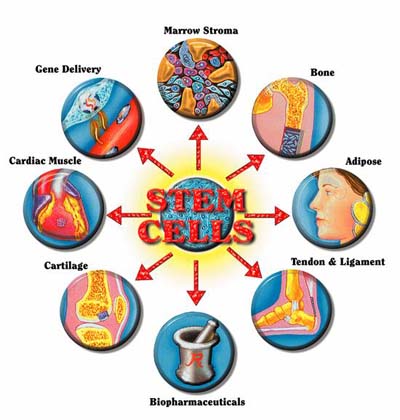Bonab
MM, Sahraian MA, Aghsaie A, Karvigh SA, Hosseinian SM, Nikbin B, Lotfi
J, Khorramnia S, Motamed MR, Togha M, Harirchian MH, Moghadam NB,
Alikhani K, Yadegari S, Jafarian S, Gheini MR. Autologous Mesenchymal Stem Cell Therapy in Progressive Multiple Sclerosis: an open label study.Curr Stem Cell Res Ther. 2012 Oct 11. [Epub ahead of print]
Despite updating knowledge and a growing number of medications for multiple sclerosis
(MS), no definite treatment is available yet for patients suffering
from progressive forms of the disease. Autologous bone marrow derived
mesenchymal stem cell (BM-MSC) transplantation is a promising method
proposed as a therapy for MS. Although the safety of these cells has
been confirmed in haematological, cardiac and inflammatory diseases, its
efficacy in MS treatment is still under study. Patients with progressive
MS (expanded disability status scale score: 4.0 - 6.50) unresponsive to
conventional treatments were recruited for this study.
Twenty-five
patients [f/m: 19/6, mean age: 34.7±7] received a single intrathecal
injection of ex-vivo expanded MSCs (mean dose: 29.5 106 cells). We
observed their therapeutic response for 12 months. Associated short-term
adverse events of injection consisted of transient low-grade fever,
nausea /vomiting, weakness in the lower limbs and headache. No major
delayed adverse effect was reported. 3 patients left the study for
personal reasons. The mean (SD) expanded disability status scale (EDSS)
score of 22 patients changed from 6.1 (0.6) to 6.3 (0.4). Clinical
course of the disease (measured by EDSS) improved in 4, deteriorated in 6
and had no change in 12 patients. In MRI evaluation, 15 patients showed
no change, whereas 6 patients showed new T2 or gadolinium enhanced
lesions (1 lost to follow-up). It seems that MSC therapy can
improve/stabilize the course of the disease in progressive MS in the
first year after injection with no serious adverse effects. Repeating
the study with a larger sample size, booster injections and longer
follow-up using a controlled study design is advised.

This is an open study and tells us that the procedure of delivering stem cells into the brain appears safe so far. It tells us little about efficacy but does suggest that this is no wonder cure. What we need to know is how long the cells survived and what did they become, because surely this is all about promoting repair. The problem is how do you measure it
Labels: Stem Cells
